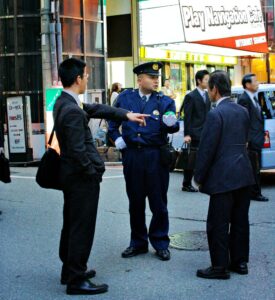No products in the cart.
Reviewing Japan’s Safety: A Comprehensive Examination Amidst Rising Crime Patterns
Introduction:
Historical Context:
Japan has traditionally celebrated its low-crime status, with figures seemingly outperforming those of other affluent nations. The COVID-19 pandemic seemed to underscore this, leading to a significant drop in reported crimes, especially those related to mobility like robberies. However, as the nation progresses beyond the pandemic, a conspicuous increase in crime rates challenges the previously unquestioned assumption of Japan’s safety superiority. Its crucial to scrutinize the resilience of this narrative and recognize the vulnerabilities in its once-unassailable standing.
Recent Incidents:
The famous Luffy case, where a gang connected to the yakuza went on a crime spree that ended tragically, has brought break-in robberies to the forefront, showing how criminal activities are changing. While the media tends to make big crimes sound more exciting, looking closely at the data reveals some subtle patterns. Despite what many people think, murders have gone down a bit in the last five years, but incidents of rape and indecent assault have gone up, partly because of changes in how the law defines rape. It’s really important to question the stories people often hear and check them thoroughly to make sure they’re true.

Yakuza Involvement and Fraud:
The fact that the yakuza are involved in certain crimes, like tricky fraud, is a problem that keeps coming back for the police. As these organized crime group members adjust to more attention from the law, them doing smaller crimes makes it harder for the police to figure out their connections. We need to get rid of the fanciful ideas about Japan being super safe and face the real impact of organized crime on how safe the country is.
Changing Perceptions:
The oscillation in public perception concerning safety in Japan over the past two decades warrants thoughtful consideration. While historical surveys indicated a lower sense of security, recent data portrays a more optimistic perspective. Nevertheless, the 2022 National Police Agency survey, conducted in the aftermath of attention-grabbing incidents, indicates a marginal increase in concerns regarding the crime situation. It is evident that individual events play a pivotal role in shaping public perception, demanding a departure from uncritical acceptance of Japan’s safety narrative.
Conclusion:
As Japan comes out of the pandemic, the seemingly higher crime rates in 2023 require a rethink about how safe the country is. The idea that Japan is an unmatched safe place is being looked at more closely, showing a more complicated reality. Looking carefully at the data suggests that the recent increase might just mean going back to how things were before the pandemic, not a big change from what’s normal. It’s important to let go of just believing in Japan’s safety image and deal with the challenges in handling a complicated situation of crime, corruption, and changing criminal methods. The time of unquestioning trust in Japan’s safety is fading away, calling for a careful and well-informed reassessment.









